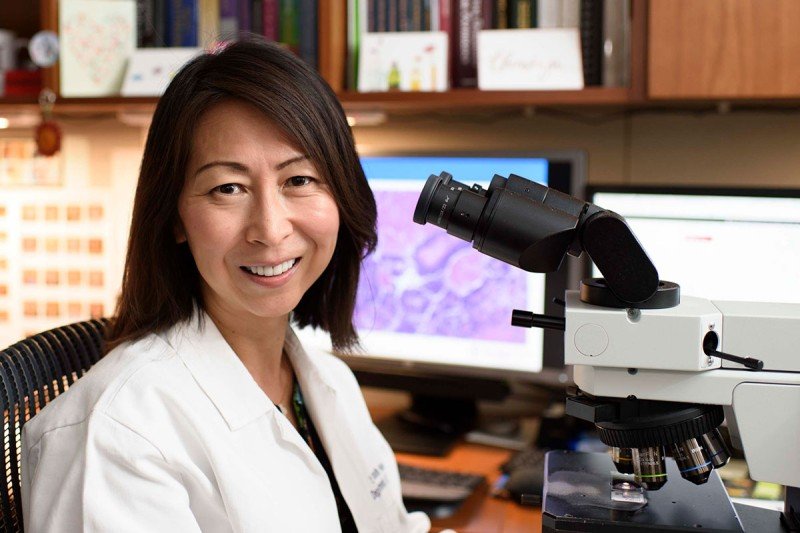
Hannah Wen is a pathologist and director of the Breast Pathology Fellowship.
“I am a pathologist with expertise in breast pathology,” says Dr. Wen. “This means I help diagnose breast disease, mainly breast cancer. If a person has an abnormal mammogram, they may have a biopsy. I look at that biopsy under a microscope to determine if it’s cancer and, if so, what type of breast cancer it is.
“Breast cancer is not one disease. We treat different types of breast cancer in different ways, and treatment is very sophisticated. My job is to learn about the specific features of each cancer, such as tumor type, tumor grade, receptor status, to help our team of oncologists and the patient build a treatment plan together.”
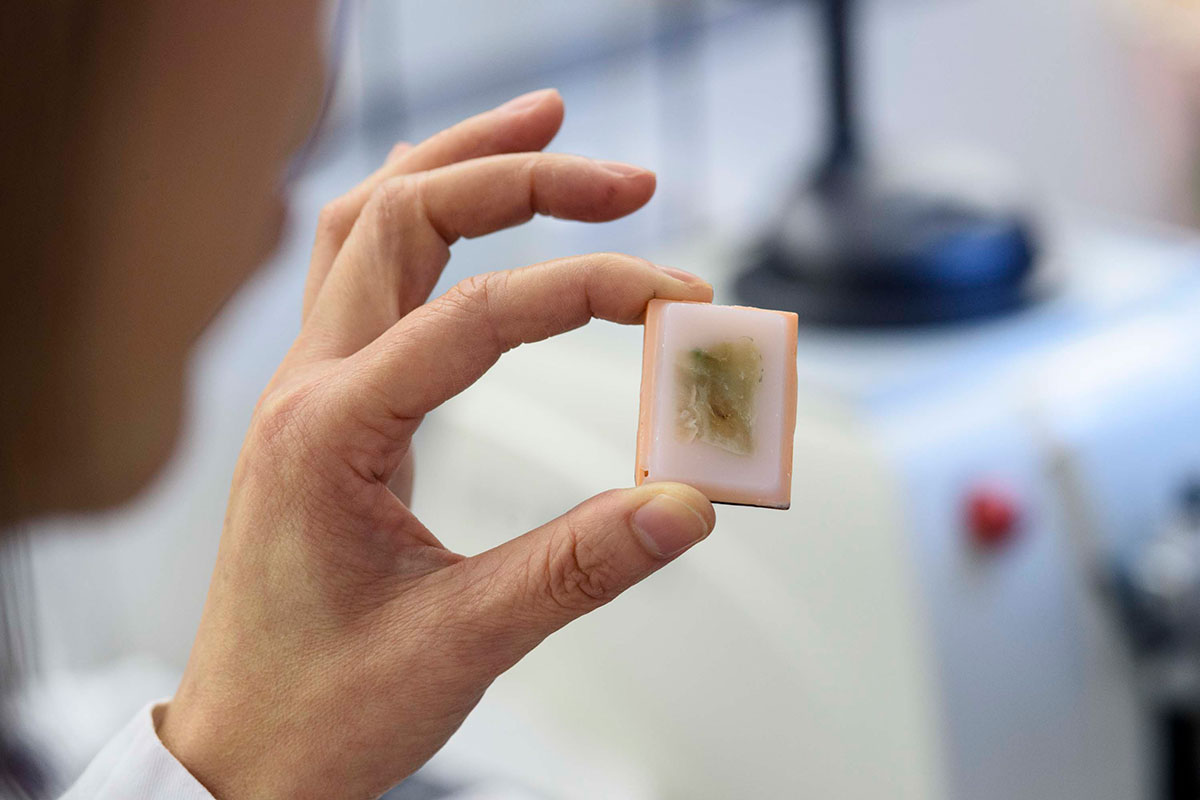
Dr. Wen holds a single paraffin block with a tissue sample.
“A big part of the pathology process involves making what we call the “cassettes” that then become slides. Our pathology assistants [PAs] are experts at preparing tissue samples for processing. Once they receive the biopsy tissue or surgical specimen from the operating room, a PA cuts it and puts it into a plastic cassette. This is called the fixation process. Once the tissue is fixed, it is embedded in paraffin, which is wax.”
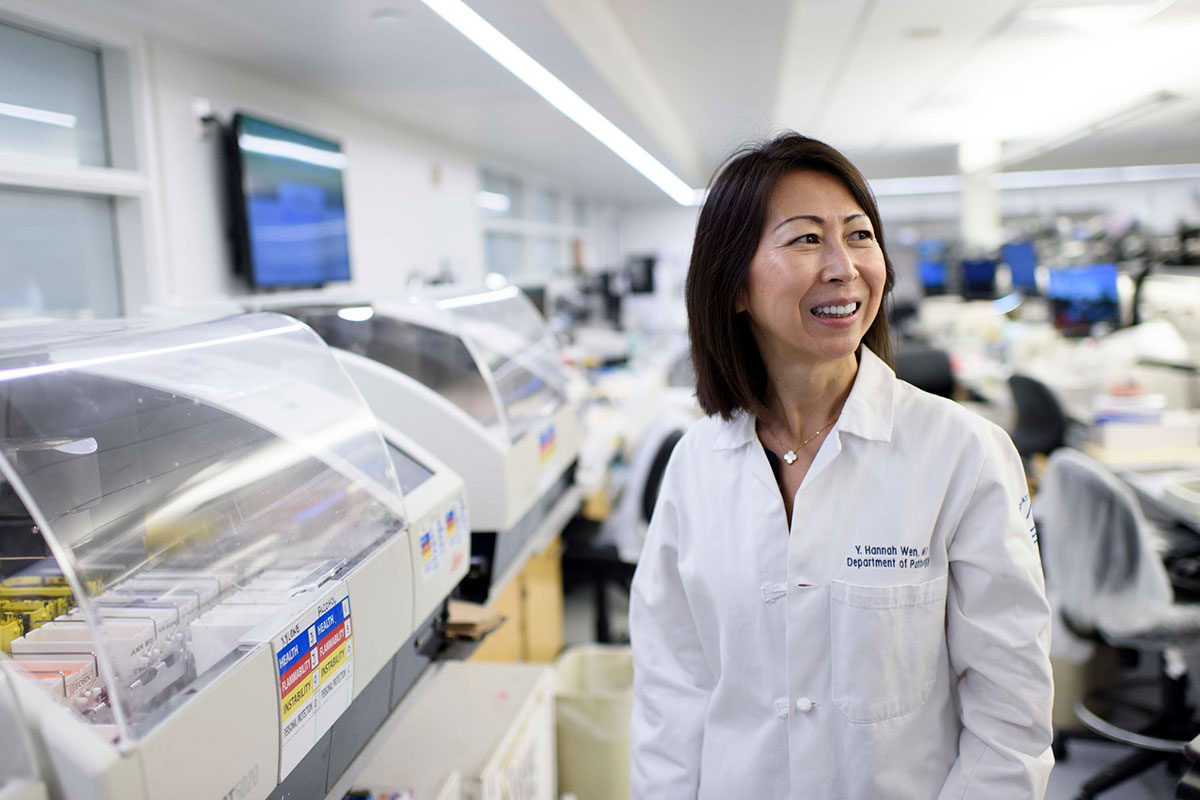
Dr. Wen next to an automatic stainer
“The paraffin blocks are then cut into very thin sections and placed onto glass slides. The slides go into a stainer, a machine that is about as big as an oven. In this machine, a robotic arm picks up the slides one by one and dips it into various solutions to stain the cells. Without this, the cells would be totally transparent and we wouldn’t be able to see them under a microscope.
“Finally, the robotic arm puts another piece of glass on the slide and I can now view the cells under a microscope.”
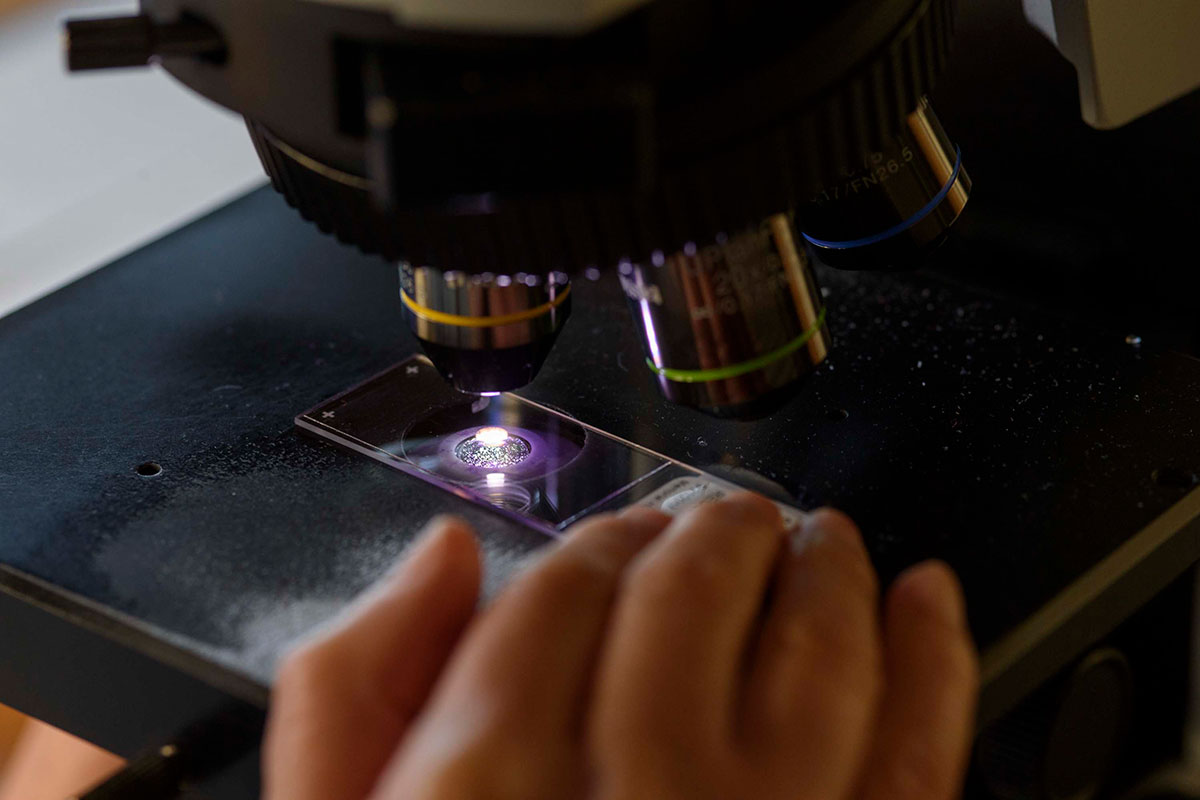
Dr. Wen looks at a triple-negative breast cancer slide with a microscope.
“One area of my research is to look for genetic mutations of triple-negative breast cancer [TNBC] that can be targeted with a drug. For another study, I am looking to see if the drug being tested actually works, if the tumor is responding to treatment at the cellular level.”
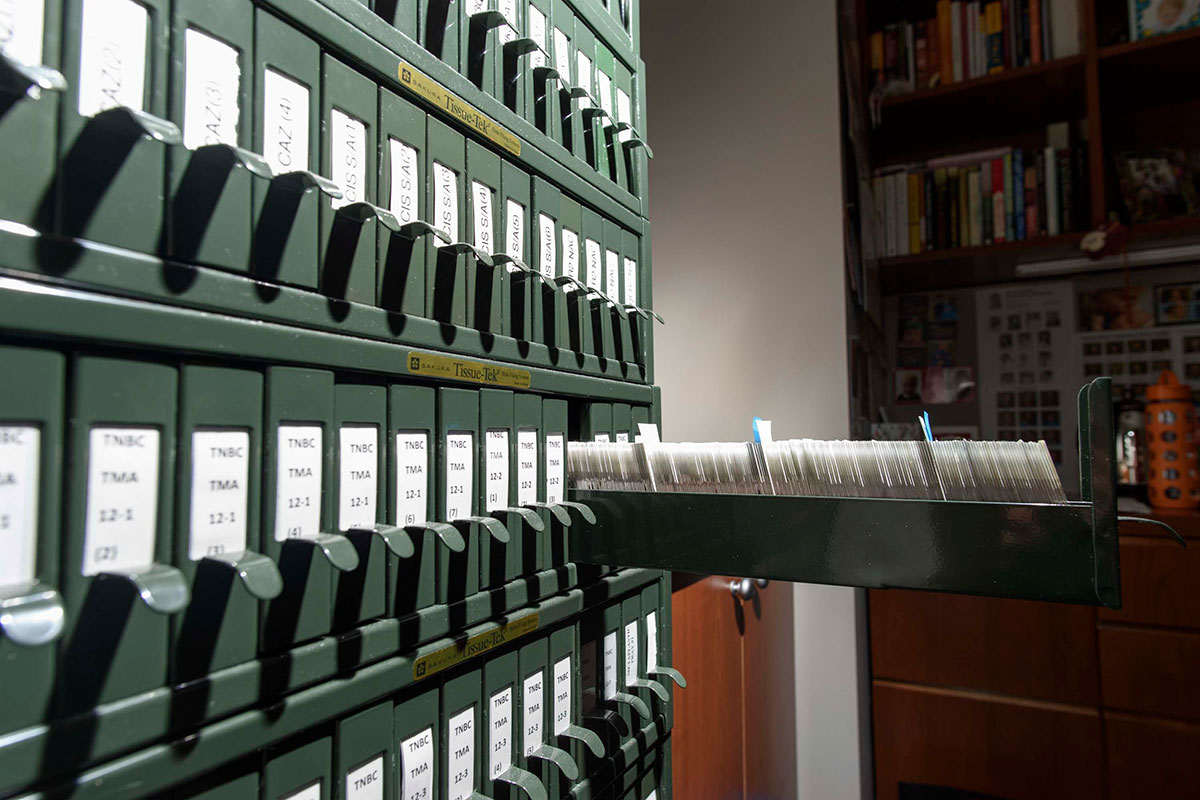
One of Dr. Wen’s cabinets of slides. Each slide has its own barcode so no information is lost due to human error.
“I’m involved in a lot of research projects. I have a couple of cabinets in my office that are full of slides. My main interest is TNBC, which is the most aggressive type of breast cancer and has the fewest treatment options for patients.”
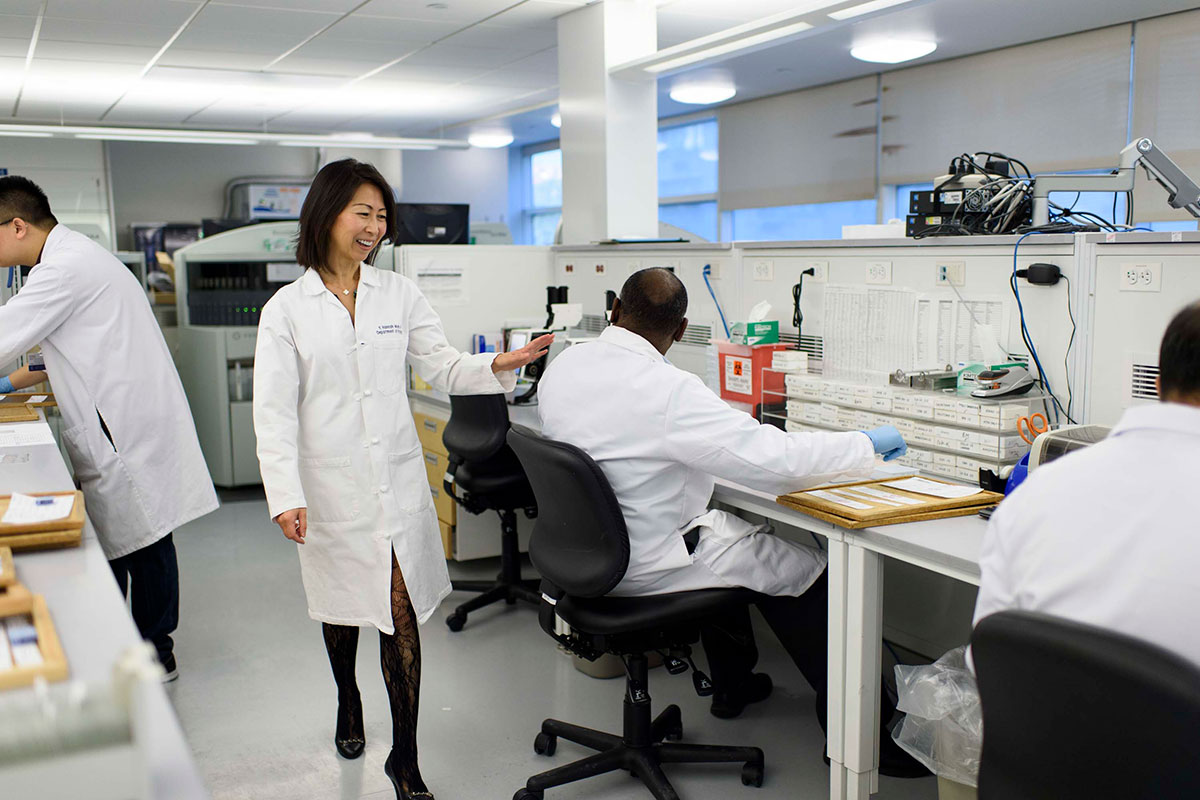
Dr. Wen with lab supervisor Rene Serrette
“Because we review many samples, this laboratory never closes. Our technicians are cutting, processing, staining, and sorting slides 24-7 so our pathologists can view and analyze slides efficiently. Our turnaround time for biopsy is usually 24 hours or less so that patients can get answers as soon as possible. We have an excellent team here at MSK.”

